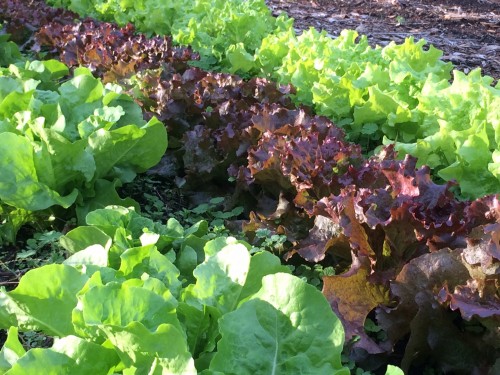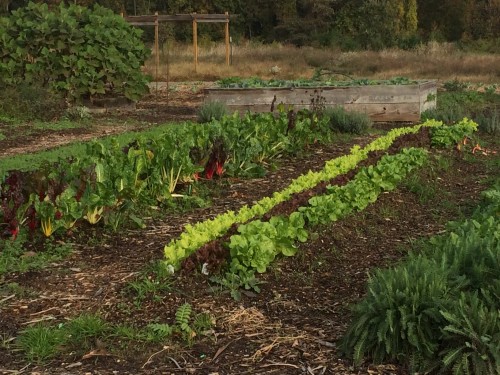The Fall Harvest Continues in the Community Kitchen Garden
by Laura Schumm, Community Kitchen Garden Horticulturist, Lewis Ginter Botanical Garden
I’m so happy to be spending my time in the Community Kitchen Garden again. My role is a bit different this time around. I have transitioned from volunteer, to intern and now to horticulturist. In my new role I manage all aspects of the Community Kitchen Garden and it presenting many exciting new challenges and opportunities each day.
So far this year volunteers and staff have harvested over 5,500 lbs. of fresh vegetables. Now we are closing out this year with some beautiful fall crops including turnips, carrots, lettuce, cabbage, and more. I am monitoring the night time temperatures awaiting our first frost. Some crops can withstand even a hard frost, like broccoli and cabbage, but others can be damaged and should be harvested or protected with row covers. If the night time temperature is forecast to dip down in to the 30’s I will install row covers to protect the cauliflower and lettuce especially. Carrots can withstand a light frost, and the cold causes the starchy root vegetables to convert any existing starch to sugars making them even sweeter. Yum!
I’m also planting cover crops of crimson clover, winter wheat, and annual rye grass for the winter. After the fall crops are harvested I will have much more time to sit down and plan for next year and my head is full of ideas for potential projects and new trials. I am very interested in trying to utilize more of the vertical space we have in the Community Kitchen Garden, so I would like to try growing more crops on trellises and converting extra tomato cages in to garden towers that we can plant in. I love the idea of having more space to grow more food for FeedMore, without adding more square footage to the garden. In an attempt to combat the weeds, I want to plant a trial of living mulch. Living mulches are usually low-growing cover crops planted along with the main crop to smother out weeds, regulate soil temperature, and conserve moisture. I’m also considering planting a wildflower buffer near the Community Kitchen Garden. Not only would it be beautiful, it would also help to bring in more beneficial insects and deter encroaching weeds.
On another note, we updated our tally of all the vegetables that we’ve grown and harvested for Feedmore in the Community Kitchen Garden since its inception in 2009. Any guesses? Would you believe that we’ve have harvested and donated over 52,200 lbs. of vegetables to FeedMore’s Community Kitchen and produced over 45,500 meals for Central Virginia’s hungry children and homebound seniors!
I am looking forward to starting fresh next year and continuing the amazing success of the Community Kitchen Garden. This garden has become the perfect example of how Lewis Ginter Botanical Garden connects people and plants to improve our community and I’m delighted to be a part of it.

